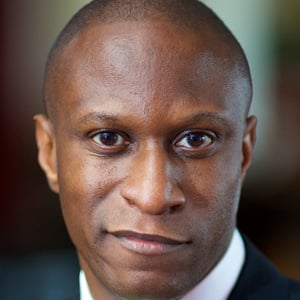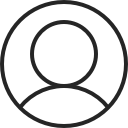Mar 01 2024 / Round the Table Magazine
Personal brand creation
Topics Covered
Great brands are shaped less from advertising, a company logo or by products and services and more so from the attributes that make a company stand out from the competition. Getting more granular, a great personal brand, according to Rory Vaden, a leading expert on the psychology of influence and co-founder of Brand Builders Group, is not self-centered but service centered.
“The irony is that your personal brand is not about you. It’s about how you serve others,” Vaden said. “One of my mentors said it this way when he gave me the single best piece of personal branding advice I ever received. He said the goal is to exploit your uniqueness in the service of others.”
Giving away knowledge
One way an advisor can build their personal brand is by teaching everything they know for free. Teaching builds trust, Vaden added, which helps an advisor establish a reputation — “reputations matter because reputation precedes revenue” — and stand out from the competition.
Xu Min Zhang, a 12-year MDRT member from Guangzhou, China, used to be camera shy, but gradually overcame her reluctance to get in front of a lens and share her expertise by livestreaming.
“There was a month when I would talk about certain topics like retirement life, and I would divide this topic into four parts to discuss one at a time at a specific time each week,” Zhang said. “I would explain the current situation with retirement life, how to make good retirement plans, what retirement services include and more. After finishing these sessions, I invited clients to watch replays, and I could edit them down to two or three minutes and use them as educational materials.”
Zhang’s entry into livestreaming and connecting online with people branded her as a tech-savvy advisor.
“I get feedback. Some clients mention to me, ‘Xu Min, I noticed that you have been livestreaming recently. You’re amazing.’ They see me as someone who is up to date not because of what I broadcast, but because I do broadcast,” Zhang said.
Personal brand attributes
Another facet of your personal brand is that quick association — those descriptive words — that come to mind after someone has an encounter with you. Rather than the company you work for or the products you sell, it’s your long-term commitment to an attribute, a result or a persona that establishes a way to be known, said Kaplan Mobray, a personal branding expert and 2023 MDRT EDGE speaker.
“Sometimes you don’t get a second chance to make an impression with that client, so we have to be intentional with our brand to make a powerful impression that delivers value,” Mobray said. “We must be consistently connected to the attributes that make us different. Consistency is more powerful than perfection. When people see that you are constantly sharing information, constantly helping families, constantly helping businesses, they’ll be drawn to you. If you are consistent, you can be known for something, and that’s half of the battle in building a powerful brand.”
Sometimes you don’t get a second chance to make an impression with that client, so we have to be intentional with our brand to make a powerful impression that delivers value.
— Kaplan Mobray
Everyone has something they’re proficient at or passionate about. While June Rong Rong Koh doesn’t consider herself an artist, the three-year MDRT member from Singapore gravitates to scrapbooking and anything design related. That’s why she enjoys crafting invitations and signage for her friends’ birthday parties and weddings, and that talent spilled over into her practice. She delivers her first impressions with an artsy flair on personalized, first-meeting digital invites she sends to new clients. Similar colors and graphics appear again on handwritten thank-you postcards Koh designed with inspirational messages that she mails before the second meeting.
“My clients would text me and say, ‘Wow, I received a postcard in my letter box.’ I think receiving a postcard is very rare, and that creates a very deep impression with them,” Koh said.
For review meetings, she creates an experience by designing the folder covers for client portfolio summaries that are presented in a gift bag with more postcards and coasters she designed with brand themes like “Be a light,” “Made of magic” and “Here comes the sun.”
“When they come on board with me as clients, it’s like going to an exclusive party where they’re going to get goody bags,” Koh said.
The same look appears on stationery and tags that accompany the pastries she sends to clients for Lunar New Year and with Mother’s Day gifts. She also reached out to clients and her staff to collaborate on designing branded baseball hats, T-shirts and tumblers for Christmas fundraisers. In these instances, clients are aligning with her artistic creativity.
They also align with another component of Koh’s personal brand, which was shaped by what she’s been through and what she cares about. Because her parents separated when she was young, and she was passed around and cared for by various relatives during her childhood, she is more attuned to people with overlooked needs and to providing a platform for their expression. That’s why she has an Instagram series featuring small-business owners, like a baker, talking about their accomplishments and struggles.
“I think it’s about consistently showing up for people in the certain way that people know you for and that will leave an impression on their hearts,” she said. “When people align their identity with you and your brand and what you stand for, they too have an identity that’s created for themselves, and their relationship with you deepens to a point where they start seeing you and your brand as family.”
Audit your brand
Other personal brand attributes advisors can be intentional about could be storytelling, problem solving, listening, leadership and boundless other qualities. Whatever it is, don’t leave it up to someone else to assign your brand identity. Among Mobray’s strategies for building your personal brand is doing your due diligence. Start by Googling yourself, because prospects are already “checking you out before they check you in.” What are others saying about you? Is there a gap between how you see yourself and how others see you? Then write a draft Google review about yourself, so you know what you would want your clients to write about you.
Another suggestion is anytime you leave a closing, ask your client one question: Why did you buy from me?
“If you don’t ask that question, you’re letting that piece of information about your brand slip out the door,” Mobray said. “So, every time you have a contract that has closed, before that client leaves the phone, leaves the meeting, leaves the building, ask, ‘Why did you buy from me?’ Because there’s something about you that allowed them to buy from you versus someone else. They’re not buying from you because you work for a great company. They might be buying from you because when they told a story about their grandma passing away, you were the only one who listened instead of just saying, ‘Hey, but we’ve got disability insurance,’ or ‘We’ve got this long-term care policy or this death benefit.’”
Just like you go online to check out customer reviews before trying a new restaurant, prospects want to see someone else praising you before they buy from you. People tend to look for friends that they have in common, so spend time building likeability on your LinkedIn profile and other social media platforms, says Mobray because that shows there are people celebrating you.
“Those mediums allow others to see who you have in common. Mutual context creates community. It lessens risk and enhances trust,” he said. “So, while you’re spending time building and calling leads, spend time connecting to the mutual context of your current customers. It will magnify the value of your business and your brand.”








